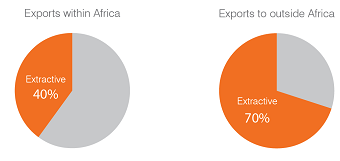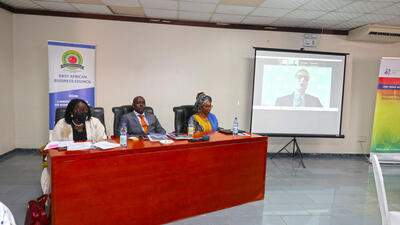



Continental agreement, country implementation: Making the AfCFTA a reality
As the AfCFTA moves into its operational phase, it is time to consider the crucial next steps
The African Continental Free Trade Area (AfCFTA) Agreement was negotiated at the continental level. However, much of its implementation and gains will be at country level. Trading under the deal is set to begin 1 July 2020 with the first installment of tariff dismantlement. Now the real test is how quickly and effectively the agreement’s state parties (as the signatories that have ratified the Agreement are known) can implement it.
The AfCFTA provides a framework and a tool for boosting intra-African trade and industrialization on the continent. It is well known that intra-African trade generates greater levels of industrial and value-added goods than trade with other regions, which is typically dominated by lower-value commodities. Some 70% of exports outside the continent are resource extractives while less than 40% within are extractives, as indicated in Figure 1.
Figure 1. Intra-African exports vs. Africa’s exports outside the continent, 2014-2016 average
The United Nations Economic Commission for Africa (ECA) projects that the value of intra-African exports will increase between 15% (or $50 billion) and nearly 25% (or $69.1 billion) in 2040, relative to the baseline without the AfCFTA in place. Most interestingly, as demonstrated in Figure 2, intra-African exports were found to increase the most for industrial products, with gains ranging between around 25% (or $36.1 billion) and almost 30% (or $43.3 billion). All African countries are expected to benefit from increased value-added exports under the agreement. In fact, least developed countries (LDCs) in Africa are estimated to have the greatest boost to industrial exports. This highlights that the AfCFTA offers a tool for boosting intra-African trade in a way that also contributes to diversification and inclusivity.
Figure 2. Change in intra-African exports by main sectors, as compared to the baseline without AfCFTA in place - 2040 - $ billion (various scenarios)
Still, these gains will not be automatic. Like any other trade agreement, state parties will undoubtedly experience short-term adjustment costs. All countries will face direct implementation costs associated with the introduction of new reforms obliged by the agreement. Others, particularly the less advanced and diversified countries, will need to invest in complementary policies to position their economies to take advantage of the AfCFTA, as well as to support groups that may be vulnerable to changes in trade. The private sector may also bear costs linked to structural readjustment of the economy as it reacts to new opportunities and competitive pressures. TRANSLATING ‘CONTINENTAL’ INTO ‘NATIONAL’
Although the AfCFTA is a continental agreement, implementation will take place at the national level. The agreement must be translated and contextualized to domestic realities. State parties will need to take deliberate actions to make the AfCFTA work and create the necessary enabling environment.
Recognizing this, the ECA, the African Union Commission (AUC) and the International Trade Centre (ITC) are assisting more than a dozen countries prepare AfCFTA National Strategies. They are Cameroon, Chad, Côte d’Ivoire, Djibouti, Guinea, Kenya, Mauritania, Niger, the Gambia, Sierra Leone, Senegal, Togo, Zambia and Zimbabwe. The plan is to double the number of countries assisted next year.
These strategies build upon existing trade, regional integration and development policies. They have been prepared through an inclusive and consultative process reflecting national priorities and the interests of a range of private-sector stakeholders.
The aim was to identify new opportunities for diversification and value chain development under the AfCFTA and the complementary actions needed to overcome existing constraints to intra-African trade. This was achieved through adopting a cross-sectoral approach, considering not just trade but also closely related areas such as agriculture, industry, services, macro-economic management and infrastructure development.
Additionally, a set of cross-cutting issues was mainstreamed – including gender equality, youth employment, climate change and new technologies – with a view to aligning the strategies with Africa’s broader goals related to inclusive growth, sustainable development and digital transformation.
Moving forward, countries that have developed AfCFTA national strategies, with or without ECA support, need to implement them. This will require institutionalizing the implementation process through private- and public-sector coordination mechanisms.
The AfCFTA embodies reforms that liberalize and facilitate trade along the export path. They include reducing tariffs, the traditional heart of free trade agreements. They also liberalize service sectors, support customs cooperation and address non-tariff measures (NTMs). Figure 3 links the key reforms of the agreement to the export path, showing the range of reforms at country level required to maximize AfCFTA gains.
At the same time, implementation must include complementary policies to ensure that its benefits are shared equitably. ECA’s Assessing Regional Integration in Africa (ARIA) IX Report on ‘Next steps for the AfCFTA’ puts forward five complementary measures for ensuring inclusive AfCFTA implementation. They are finance and investment; production; trade facilitation; trade-related infrastructure; and import defence measures (see Figure 3).
Figure 3. Export pathway: reforms and complementary measures
These speak very closely to the seven clusters of the African Union’s Action Plan for Boosting Intra-African Trade: trade policy, trade facilitation, productive capacity, trade-related infrastructure, trade finance, trade information and factor market integration. IMPLEMENTATION: A WORTHWHILE INVESTMENT
The AfCFTA is an initiative with very high potential returns. Like any other high-yielding venture, governments, the private sector, investors and development partners must come together and put resources in place to make it work. Deliberate actions will be required to set up national structures to implement the agreement, design complementary policies to maximize gains from implementation and pursue a tailor-made pathway to benefit from the AfCFTA.
















